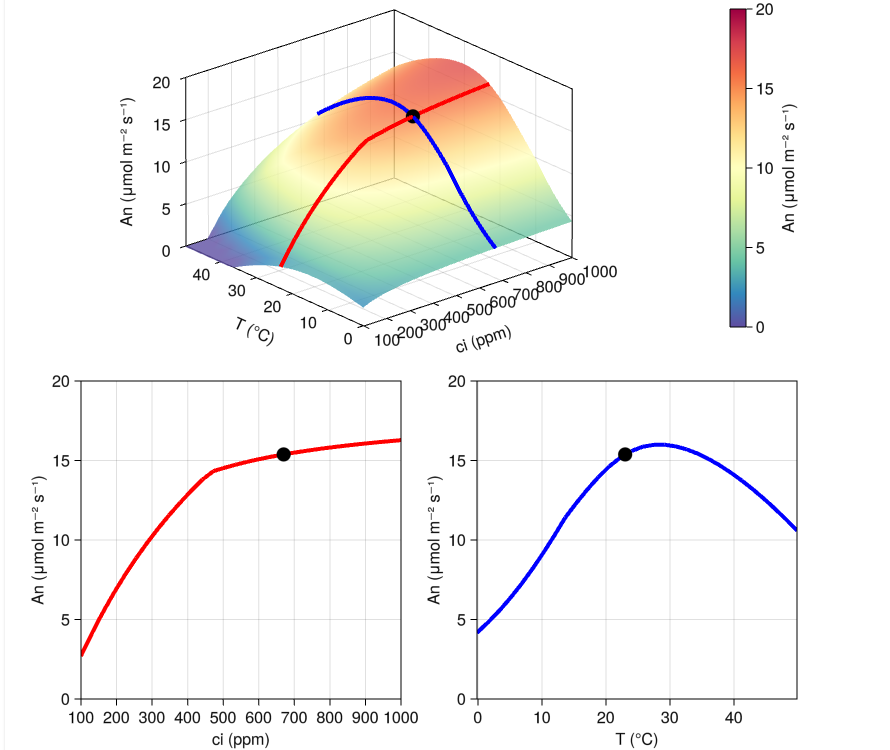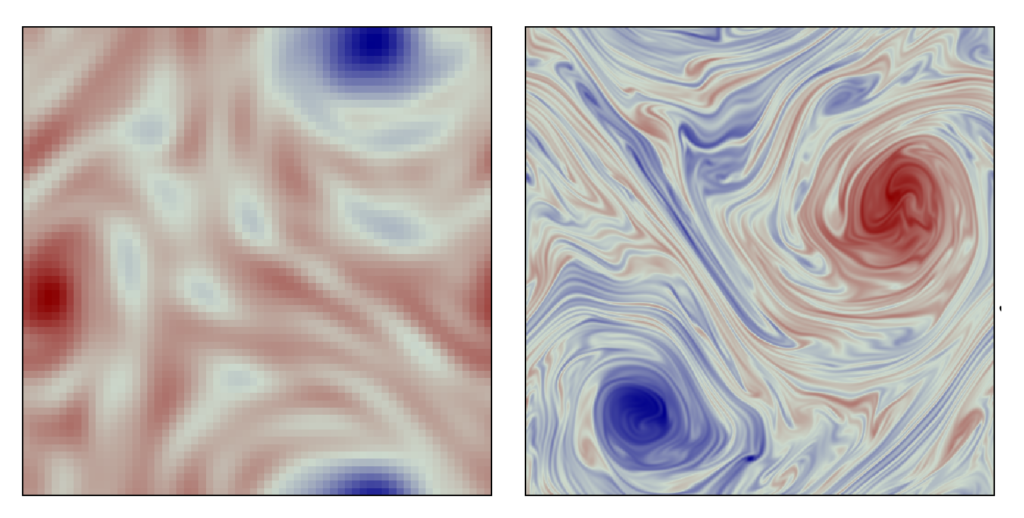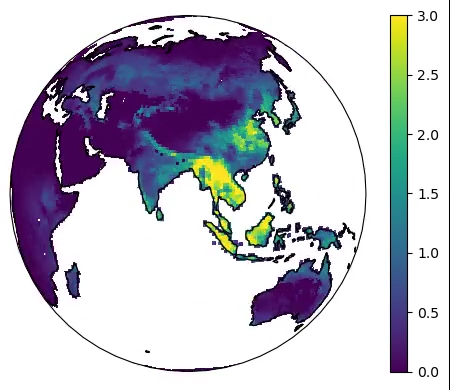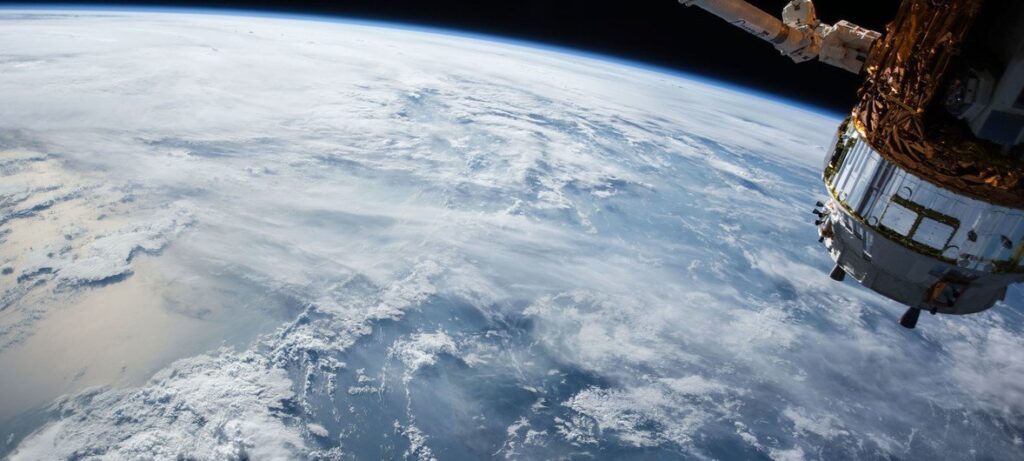By Simone Silvestri, Gregory Wagner, and Raffaele Ferrari, for the MIT CliMA group. Ocean eddies—the ocean equivalent of atmospheric cyclones and anticyclones—play a key role in the Earth’s climate system. However, they are not simulated by climate models due to their small scale, between 10 and 100 km, which is below the resolution of standard ocean models. To approximate the climate impact of the missing eddies, modelers employ parameterizations—empirical equations that estimate the collective effect of eddies given resolved model variables such as ocean current strength, temperature, and salinity. Yet, this approach is fraught with uncertainties. For example, a 2002…
Read More
Recent posts
Cloud microphysics refers to the complex processes that govern the formation, evolution, and interactions of particles within clouds. These processes significantly influence the Earth’s climate system by regulating precipitation patterns and cloud cover. Understanding the intricacies of cloud microphysics is therefore essential for accurate climate modeling. Yet, the precise modeling of these complex microphysical processes remains one of the most challenging aspects of climate research. Traditional cloud microphysics modeling within climate models, known as bulk methods, aims to simplify the physics governing the vast range of processes occurring within clouds. While these methods have enabled more efficient climate simulations, their…
Read More
by Alexandre A. Renchon, Katherine Deck, Renato Braghiere: In the realm of scientific advancement, enhancing Earth System Models (ESMs) stands out as a paramount objective. Presently, however, these models remain enigmatic enclaves for many researchers, akin to inscrutable black boxes. The labyrinthine nature of ESMs, coupled with their high computational demands, usage of esoteric programming languages, and the absence of lucid documentation and user interfaces, contribute to this opacity. To surmount these obstacles, CliMA is creating a new era of accessible ESM features for the global scientific community: Modernized Programming: Departing from convention, CliMA adopts a contemporary programming language, Julia.…
Read More
by Tobias Bischoff and Katherine Deck Climate simulations play a crucial role in understanding and predicting climate change scenarios. However, the spatial resolution that simulations can be carried out with is often limited by computational resources to around ~50-250 km in the horizontal. This leads to a lack of high-resolution detail; moreover, since small-scale dynamical processes can influence behavior on larger scales, coarse resolution simulations can additionally be biased compared to a high-resolution “truth”. For example, simulations run at coarse resolutions fail to accurately capture important phenomena such as convective precipitation, tropical cyclone dynamics, and local effects from topography and…
Read More
By Eviatar Bach and Oliver Dunbar To understand this blog post, you will need some basic familiarity with probability (Bayes’ theorem, covariance) and multivariate calculus. In climate modeling, small-scale processes that cannot be resolved, such as convection and cloud physics, are represented using parameterizations (see two previous blog posts here and here). The parameterizations depend on uncertain parameters, which leads to uncertainty in simulations of future climates. At CliMA, we use observations of the current climate, as well as high-resolution simulations, to estimate these parameters. The learning problem is challenging, as the parameterized processes typically are not directly observable, and…
Read More
by Yujie Wang and Renato Braghiere: Climate model predictions of future land carbon sink strength show significant discrepancies. To enhance predictive accuracy and reduce inter-model disagreements, it is crucial to improve the representation of vegetation processes and calibrate the models using more observational data. However, the limitations of computational resources in the past have hindered the integration of new theories and advances into traditional climate models, which often rely on statistical models to parameterize vegetation processes instead of mechanistic and physiological models (such as stomatal control models). Additionally, the preference for faster models has limited the incorporation of complex features (e.g.,…
Read More
CliMA provides state-of-the-art data assimilation and machine learning tools that enable users to calibrate their models using large amounts of data. CliMA’s research scientists and engineers continually upgrade these tools and made several breakthroughs in the past months. CliMA’s data assimilation and machine learning (DA/ML) team, led by Oliver Dunbar, improved the scalability of one of their machine learning emulators. Think of emulators as accelerated data-driven models, trained to replicate the evolution of a complex system (in our case, a climate model). Once trained, emulators can be run millions of times using few computational resources. These large samples are essential…
Read More
CliMA’s software team, led by Simon Byrne, added a software interface to ClimaCore.jl for saving and loading data from distributed simulations. We caught up with Dr. Byrne near the Gong inside the CliMA conference room; an edited version of our interview is reproduced below. Leilani Rivera-Dotson: Why did your team implement this interface? Dr. Byrne: There are two main reasons we need to be able to save and load data: saving the quantities of interest, such as temperature and precipitation, for analysis and other post-processing tasks; capturing the state of the model so that we can reproduce or resume the…
Read More
Simone Silvestri and Greg Wagner have made substantial progress in improving the numerical accuracy of the ocean component of the CliMA model, Clima-Ocean. Typical finite-volume ocean models for climate prediction use “second-order” schemes to discretize terms in the ocean’s momentum balance. But second-order momentum advection schemes are noisy, and therefore must be paired with artificial viscous terms to suppress spurious oscillations and prevent numerical instability. Artificial viscosity has the unfortunate side effect of artificially suppressing ocean mesoscale turbulence, which plays a fundamental role in Earth’s climate system by transporting heat poleward and determining the ocean’s density stratification. Improving the representation…
Read More
[latexpage] By Ignacio Lopez-Gomez Over the past few years, machine learning has become a fundamental component of some newly developed Earth system parameterizations. These parameterizations offer the potential to improve the representation of biological, chemical, and physical processes by learning better approximations derived from data. Parameters within data-driven representations are learned using some kind of algorithm, in a process referred to as model training or calibration. Gradient-based supervised learning is the dominant training method for such parameterizations, mainly due to the availability of efficient and easy-to-use open source implementations with extensive user bases (e.g., scikit-learn, TensorFlow, PyTorch). However, these learning…
Read More







